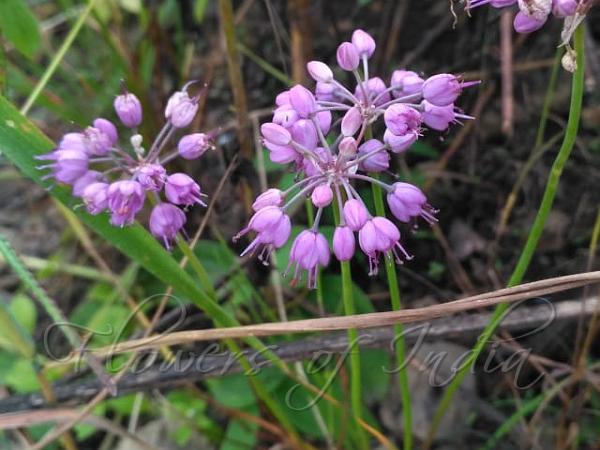|
| Chinese Onion |
|

|

|
|
|
|
Photo: |
Botanical name: Allium chinense Family: Amaryllidaceae (Nargis family)
Synonyms: Allium bakeri, Allium exsertum, Allium splendens
Synonyms: Allium bakeri, Allium exsertum, Allium splendens
Chinese Onion is a perennial herrb, up to 0.5 m tall
and producing evergreen bulbs. Flowers are lavender in color with long
flower-stalks, thick tepals and long-exerted styles and stamens.
Flowers are borne in umbels of reddish purple flowers on a stalk 40-60
cm long. It has hollow bright green leaves, grows in clumps and forms
many well developed bulbs. Leaves are slender and thin-walled, 3-5
angled, not round, and less stiffly erect, having solid flowering stem.
In hill areas of Manipur, the inflorescences are eaten raw with dry
beef Ringneokashai or eaten in boiled vegetable soup. The bulbs
and cloves are pickled in NE India, where it is popularly called Naga garlic.
Chinese Onion is also known for
insects and moles repelling characteristics, while its extract is used
for moth control. Chinese Onion is native to China, cultivated and
naturalized in the Himalayas. It is cultivated in many east Asian
countries.
Medicinal uses: In traditional Chinese
medicine, plant bulbs of Jiaotou are reputed to cure mental stress,
heart problems, and tumors etc., and are also incorporated in several
medicinal preparations.
In traditional Chinese
medicine, plant bulbs of Jiaotou are reputed to cure mental stress,
heart problems, and tumors etc., and are also incorporated in several
medicinal preparations.
Medicinal uses:
 In traditional Chinese
medicine, plant bulbs of Jiaotou are reputed to cure mental stress,
heart problems, and tumors etc., and are also incorporated in several
medicinal preparations.
In traditional Chinese
medicine, plant bulbs of Jiaotou are reputed to cure mental stress,
heart problems, and tumors etc., and are also incorporated in several
medicinal preparations. | Identification credit: Tabish | Photographed in Machi Village & Imphal, Manipur. |
• Is this flower misidentified? If yes,